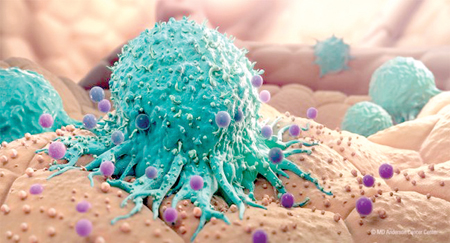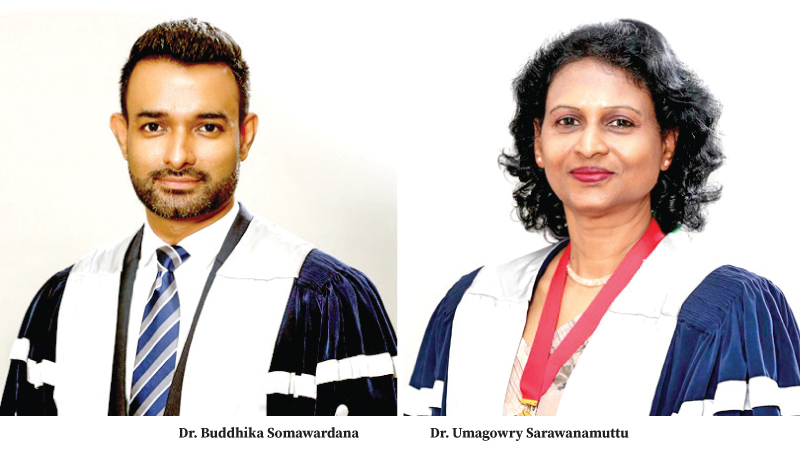There is a popular myth that cancer is something that a person dies from but cancer should be viewed as something that an individual can learn to live with. It is true that cancer can cause death, but new breakthroughs in early detection of cancer have made it much more treatable.
There are a lot of myths and misconceptions about cancer that make it hard for people to know what’s true about this disease. These myths and misconceptions fuel the disease burden and mortality due to cancer, as they increase stigma and reduce chances of cancer patients seeking effective treatment early. This results in lost opportunities for successful treatment of the disease. It also increases lost opportunities to prevent the disease.
Cancer awareness
The Sri Lanka College of Oncologists (SLCO), the main professional body of cancer specialists in Sri Lanka, said that public education regarding the prevention, early detection, and proper treatment of cancers plays a crucial role in enhancing cancer outcomes.
As per a communique issued by the SLCO President, Consultant Clinical Oncologist
Umagowry Sarawanamuttu and SLCO Secretary Consultant Haemato-Oncologist Dr.
Buddhika Somawardana, numerous myths and misconceptions on cancers and their treatments, and reliance of people on unqualified and untested treatments have led to some patients with curable cancers only presenting for proper care at a late stage, thus significantly compromising their chance of cure.
The SLCO is dedicated to advancing the field of oncology through research, education, and advocacy. They have also committed not only to providing exceptional care but to fostering a community of medical professionals who are at the forefront of innovations in cancer treatment and research.
“Based on the most recent statistics provided by the National Cancer Control Programme, there were 37,753 newly identified cancer cases in Sri Lanka in 2021. This translates to an average of 103 new cancer diagnoses each day. Additionally, over the course of the year, more than 1,000 children received a cancer diagnosis. Among men in the country, the most prevalent cancers include those affecting the oral cavity, lungs, colorectal region, oesophagus, and prostate in the respective order, “ the communique said.
Conversely, women were most commonly diagnosed with breast, thyroid, colorectal, ovarian, and cervical cancers. Breast cancer represents more than a quarter of all reported cases among women.
Need to address cancer inequities
 According to the latest research, the global incidence of cancer diagnoses among people under the age of 50 has surged by nearly 80 percent over the past three decades. During the same period, there was a 27 percent increase in cancer-related deaths among adults in their 40s, 30s, or younger. This translates to over a million deaths in people under 50 years due to cancer annually. In 2020, cancers ranked as the second most common cause of hospital deaths in Sri Lanka. The registration system of Sri Lanka reported around 16,000 deaths attributed to cancers in 2019.
According to the latest research, the global incidence of cancer diagnoses among people under the age of 50 has surged by nearly 80 percent over the past three decades. During the same period, there was a 27 percent increase in cancer-related deaths among adults in their 40s, 30s, or younger. This translates to over a million deaths in people under 50 years due to cancer annually. In 2020, cancers ranked as the second most common cause of hospital deaths in Sri Lanka. The registration system of Sri Lanka reported around 16,000 deaths attributed to cancers in 2019.
“But the actual figure is slightly different because if a cancer patient died due to a heart attack, cancer would be marked as the secondary reason for the death,” said Dr. Somawardena.
According to the communique, globally, nearly one in six deaths is attributed to cancer.
The latest estimates of the World Health Organization (WHO)’s cancer agency, the International Agency for Research on Cancer (IARC) has highlighted the growing burden of cancer, the disproportionate impact on underserved populations, and the urgent need to address cancer inequities worldwide.
In 2022, there were an estimated 20 million new cancer cases and 9.7 million deaths. The estimated number of people who were alive within five years following a cancer diagnosis was 53.5 million. About 1 in 5 people develop cancer in their lifetime, approximately 1 in 9 men and 1 in 12 women die from the disease.
The new estimates available on IARC’s Global Cancer Observatory show that 10 types of cancer collectively comprised around two-thirds of new cases and deaths globally in 2022. Lung cancer was the most commonly occurring cancer worldwide with 2.5 million new cases accounting for 12.4 percent of the total new cases.
Leading cause of cancer deaths
Lung cancer was the leading cause of cancer death (1.8 million deaths, 18.7 percent) of the total cancer deaths) followed by colorectal cancer (900 000 deaths, 9.3 percent), liver cancer (760 000 deaths, 7.8 percent), breast cancer (670 000 deaths, 6.9 percent) and stomach cancer (660 000 deaths, 6.8 percent). The WHO has predicted over 35 million new cancer in 2050, a 77 percent increase from the estimated 20 million cases in 2022. The rapidly growing global cancer burden reflects both population ageing and growth, as well as changes to people’s exposure to risk factors, several of which are associated with socioeconomic development.
One-third of cancer-related deaths can be attributed to factors such as tobacco use, elevated body mass index, alcohol consumption, insufficient intake of fruits and vegetables, and a lack of physical activity.
While scientific advances have resulted in improvements in cancer care in leaps and bounds, the associated costs are rising rapidly as well. Public sector hospitals strive to provide the best quality of care to these patients completely free of charge amidst many challenges and limited resources.
This has resulted in improved outcomes of these patients compared to many of our regional and socio-economical peers. However, these skyrocketing costs pose a significant challenge to maintain these lofty standards. This is where public-private partnerships can bridge the gap left by public sector funding shortfalls.
According to the experts, the Sri Lankan public has been steadfast supporters of many of the cancer units in all corners of the country. Recent infrastructure facilities built in the National Cancer Institute, Maharagama, Teaching Hospital, Karapitiya, and Teaching Hospital Batticaloa as well as General Hospital, Matara are prime examples of this. The Sri Lanka College of Oncologists has always been strong proponents of harnessing this generosity in an organised, transparent and coherent manner to lift the standards of cancer care in the country.
The experts have estimated that 40 percent of cancer patients reach or exceed the five-year survivor mark. It is also estimated that about a third of all cancers are curable and another third preventable.
But the chances of cure depend on the type of cancer, stage of cancer and the general health of the person. Improved education and access to preventative care is bringing improved cancer outcomes to patients. Screening helps detect cancer at early stages when it is most likely to be cured.
However, prevention is always better than cure, so the SLCO also strives to educate people about how they can lower their cancer risk through lifestyle changes such as quitting smoking, maintaining a healthy diet, exercising, protecting themselves from the sun and lowering their alcohol intake.









